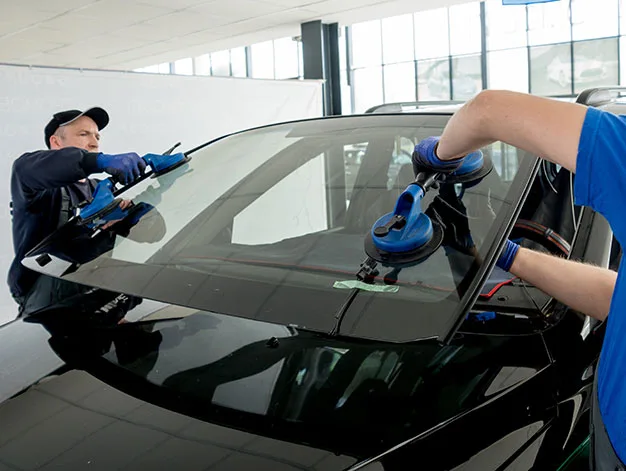The Comprehensive Guide to Choosing Between Aftermarket and OEM Auto Glass
Aftermarket or OEM windshield? The choice is yours. Consider these factors to decide:
- Cost: Aftermarket is often cheaper
- Quality & Safety: OEM sets the standard, but good aftermarket options exist
- Your car: Older models may need aftermarket glass
- Installation: A skilled installer is key for either type
The world of car maintenance is always changing. Car fans and pros have one debate. It's about Aftermarket vs. OEM (Original Equipment Manufacturer) auto glass. This article dives deep into this debate. It offers detailed insights to help car owners decide.

Understanding OEM Auto Glass
OEM auto glass is manufactured by the same company that produced the glass for your vehicle’s original assembly. It's made for your car's exact size. This ensures a perfect fit and great performance. OEM glass usually comes with high-quality assurance. It follows strict manufacturer standards.
Advantages of OEM Auto Glass
- Perfect Fit: Ensures a seamless integration with your vehicle, reducing the risk of leaks or wind noise.
- High-Quality Material: Often made with stronger materials, offering better durability and longevity.
- Safety: Meets the safety standards set by the vehicle manufacturer, ensuring optimal protection.
Understanding Aftermarket Auto Glass
But, aftermarket auto glass is made by companies. They are not the vehicle’s original manufacturer. These products fit many vehicle models. They are often cheaper than OEM options.
Advantages of Aftermarket Auto Glass
- Affordability: Typically less expensive than OEM glass, making it a popular choice for budget-conscious consumers.
- Availability: Wide availability, offering quicker turnaround times for replacements.
- Variety: Provides a broader range of options in terms of tinting and other features.
Comparing Quality and Safety
OEM glass is revered for its quality and safety. But, many aftermarket glass makers follow Federal Motor Vehicle Safety Standards (FMVSS). It's important to note this. This means that a high-quality aftermarket glass can also be safe and work well. However, differences in thickness and shape can impact the installation quality. They also affect the glass's overall performance.
Considering Warranty and Insurance Implications
- Insurance companies often prefer OEM auto glass replacements due to their guaranteed compatibility and quality. However, it's essential to check with your insurance provider as some policies may only cover aftermarket glass due to its lower cost.
- Making the Right Choice for Your Vehicle
- The decision between aftermarket and OEM auto glass depends on various factors:
- Budget: If cost is a significant concern, aftermarket glass offers a more affordable option.
- Vehicle Model: Aftermarket glass might be the only option for older or less common vehicles.
- Quality and Safety Preferences: If you prioritize the highest quality and safety standards, OEM glass is the way to go.
- Installation: A Critical Factor
Regardless of your choice, the installation process plays a crucial role in ensuring the effectiveness and safety of the auto glass. Choosing a reputable and experienced installer who can handle OEM and aftermarket glass with expertise is crucial.
Conclusion
Aftermarket and OEM auto glass debate centers around cost, availability, quality, and safety. OEM glass offers the peace of mind of maker standards. But, aftermarket glass is a cheaper and widely available alternative. In the end, your choice should match your preferences. It should also match your vehicle's needs and your finances.
